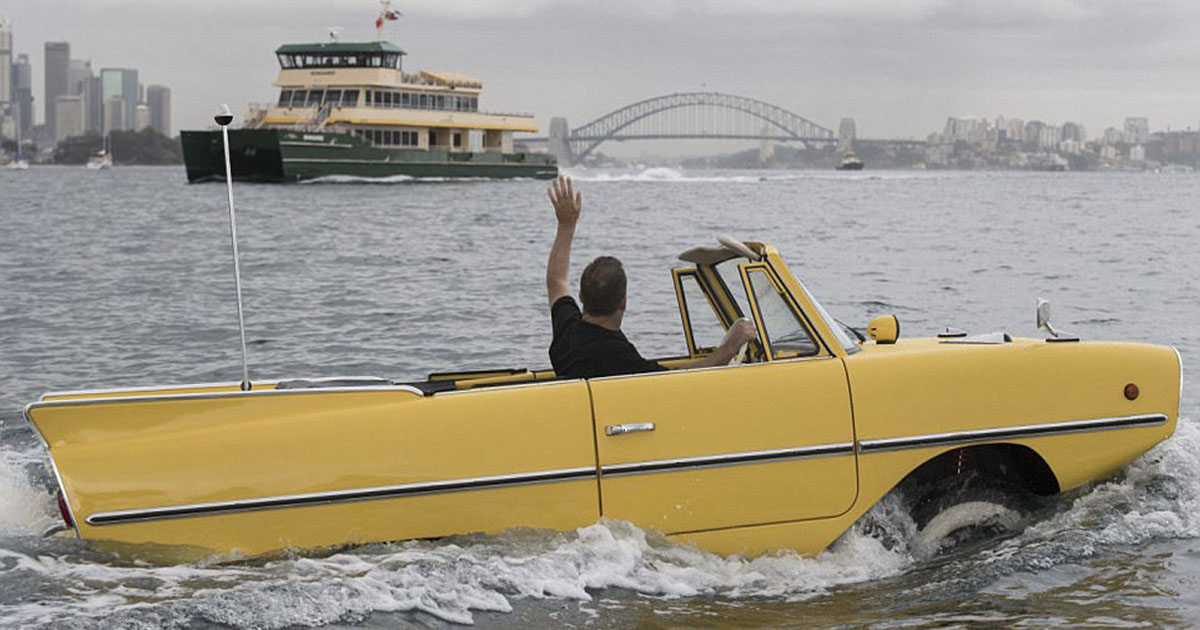A Car or A Boat
Way back during the 1960s I saw a news item on the television news that intrigued me. The item featured a vehicle driving into Sydney Harbour and then floating amongst the yachts and other vessels on the harbour. What a great innovation I thought.
A memory of that item came to me whilst on a bus tour of the Snowy Mountains of NSW. During a visit to the Cooma Car Club in November 2022 I actually saw the “Amphicar”, the vehicle that featured in the news item.
The origins of this amphibious vehicle can be traced back to WW2. Hans Trippel, an engineer and member of the NAZI party, came up with the idea of producing such a vehicle as part of the NAZI war machine. Using the facilities of Volkswagen he produced the Volkswagen Schwimmwagen of which only around 200 were produced.
After the war Trippel served two years imprisonment after being sentenced during the “denazification” of Germany, after which he decided to try to perfect his idea of an amphibious vehicle.
In 1961, the first “Amphicars” were manufactured and manufacturing continued until 1965. During that period, 3,878 amphibious cars were produced. Although its numbers might be modest, the “Amphicar” remains the only civilian amphibious passenger automobile ever to be mass-produced to date.
The “duckboat” tourist vehicles seen in coastal cities around the world also descended from the Amphicar. Unfortunately, the growing number of accidents involving these hybrid tourism vehicles, which typically carry upwards of 30 passengers at once, has made their continued use controversial.
Though it’s almost 60 years now since the last Amphicar was made, these unique vehicles continue to charm collectors. Perhaps this quirky car that turns into a boat could still inspire an amphibious vehicle revolution in the future.
The United States was the only country where the Amphicar could claim to have achieved success. The most famous Amphicar owner was none other than, then US President, Lyndon B. Johnson, who used his hybrid car to play practical jokes on guests, as journalist Robert Sempler divulged in a 1965 profile of the president:
“The scenario is familiar now. An unsuspecting guest is lured into Amphicar. President says they’re going for a little spin. President heads for water. Guest cries, ‘Hey, you’re going into the water!’ President flips a lever that locks doors, prevents leakage. Car hits water with a whoosh. Guest gasps, then realizes he isn’t sinking. Color returns to face, and he and President go putt-putting along at about 5 knots.”

According to enthusiast website, Amphicar.com, the amphibious car was also marketed as a specialty vehicle for emergency rescue services. The American Red Cross deployed a number of “Amphicars” to serve flood danger areas. But as the decade came to a close, the novelty of the boat-car hybrid vessel began to wear off.
A number of factors led to the failure of the amphibious vehicle which include –
1. First, the infrastructure needed to support the amphibious car’s unique capabilities simply didn’t exist. In order for the driver of an Amphicar to launch their vehicle into the water, there needed to be sufficient space, like a proper ramp. These kinds of setups were limited.
2. There was the amphibious car’s confusing identity. While the water-riding vehicle enjoyed some degree of attention due to its dual function, the marketing for it was unclear. Was it a car or was it actually a boat? This muddled messaging may have cost Amphicar potential customers.
3. Though compact, the Amphicar was also a high-maintenance automobile. After five hours in the water, the engine needed to be greased — which could only be done by lifting the entire car and taking out the rear seats. Exposure to saltwater made it vulnerable to erosion, so it needed to be frequently cleaned thoroughly with fresh water.
Will anyone else float the idea of amphibious vehicles, I wonder?











